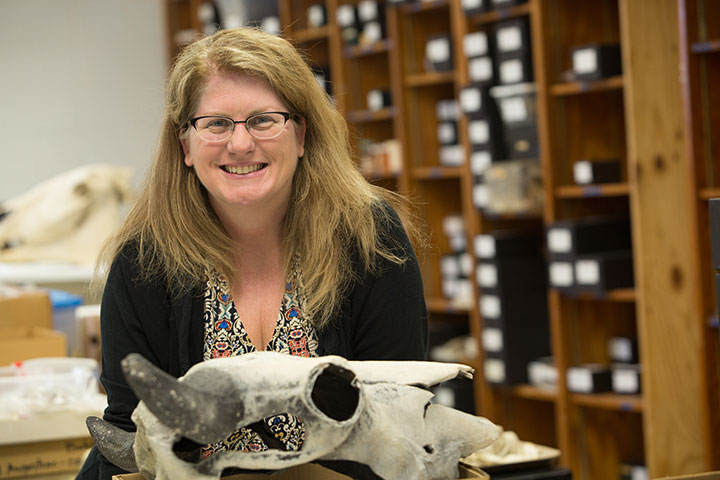
A Tennessee cave with a colorful history as a speakeasy, dance hall and hideout during the Civil War was originally a native burial ground 8,500 years ago.
New research by Florida State University Associate Professor of Archaeology Tanya Peres in the Journal of Archaeological Science: Reports details the complex history of the cave located in Murfreesboro, Tenn. And it is revealing information about the people that lived in the southeastern United States thousands of years ago.
“Humans have a long history on the lands in the southeastern United States,” Peres said. “It’s a complex history, and a lot of it is still unknown.”
The Black Cat Cave in Murfreesboro had long been a site of local fascination for residents of the central Tennessee city. Local lore includes stories of the cave being used to hide livestock during the Civil War. During prohibition, it became a speakeasy and dance hall.
At one point, the cave — about 7 miles from the city center — was outfitted with a stage for a band, a concrete dance floor, a fireplace and even a chandelier.
In 2004, a spelunking college student noticed human bones at the site. The local sheriff’s office opened a homicide investigation and recovered additional human remains. All of the remains were entered into evidence at the sheriff’s office and remained there until 2010.
In 2010, in an effort to clear old case files, the bones were examined by scientists at the University of Tennessee, Knoxville, who determined they were far older than previously thought and sent them to the Tennessee Division of Archaeology (TDOA). During the cataloging process, TDOA archaeologists contacted the owner of the cave – the City of Murfreesboro, and alerted city officials to the potential for a prehistoric occupation at the site. This is when Peres, then at Middle Tennessee State, got involved.
Peres and her colleagues found that the site did in fact serve as a type of prehistoric cemetery.
In addition to several skeletons that the sheriff’s office unearthed, she and her team found the skeletons of a dog as well as piles of fresh water shells from snails and mussels.
Researchers believe that the people who lived in the area likely ate the snails and mussels and used the shells as part of burial rituals. They also hypothesize that in accordance with some Native American beliefs, the dog buried at the site may have served as a symbolic guide to the underworld.
“The research can tell us a lot about the rituals of people at this time,” Peres said. “It helps people understand we live here in this community now, but people have actually lived here for a long time. We know very little about the people who came way before us.”
The site is now being protected as a burial site by City of Murfreesboro.




